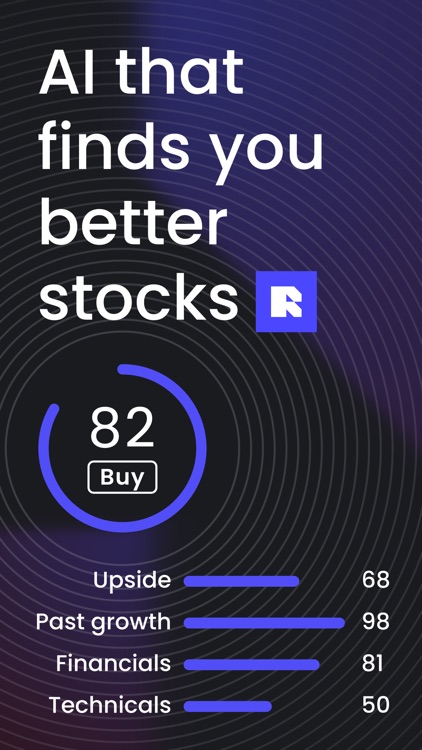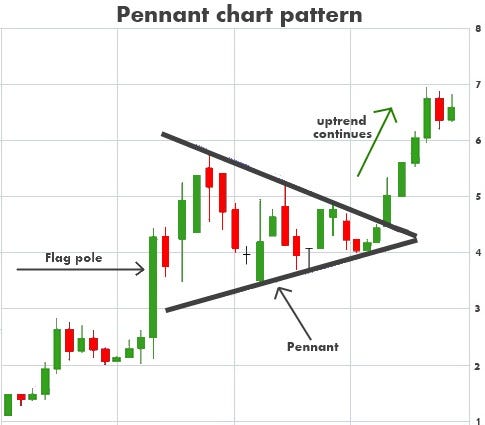20 New Pieces Of Advice For Choosing Chart Ai For Trading Websites
20 New Pieces Of Advice For Choosing Chart Ai For Trading Websites
Blog Article
Top 10 Suggestions To Determine The Integration And Compatibility Of Ai-Based Stock Forecasting And Trading Platforms
AI platforms for trading stocks that predict and analyze stocks based on AI must have compatibility with one another. An integrated platform that is seamless with your existing tools and systems as well as workflows will greatly improve efficiency and effectiveness. Here are the top ten tips to assess compatibility and integration.
1. Check Brokerage Integration
Platform integration with preferred brokers or trading accounts: Check whether the platform integrates with your chosen brokerage or account.
Trade execution: Verify if the platform allows direct trade execution via the broker integrated.
Account Synchronization: Ensure whether the platform has the ability to sync live-time balances on your account as well as positions and transaction histories.
2. Check API Availability
API access: Make sure that the platform offers an API (Application Programming Interface) for developers to build custom tools or automate workflows.
API documentation - Make sure that the API's examples and usage examples are well documented.
Rate limits: Check if the API has reasonable rates limits that are able to handle the amount of usage you're expecting.
3. Review Third-Party Integration
Popular tools: See if your platform is compatible with well-known tools such as Google Sheets or Excel.
Data export/import: Ensure the platform permits easy export and import of data into and out of other tools.
Extensions/Plugins: Check if the platform supports plugins or extensions for additional features.
4. Test Compatibility Operating Systems
Desktop compatibility: Make sure the software works with your preferred operating system (Windows, macOS, Linux).
Mobile compatibility Check if the platform provides an app that works with iOS or Android.
Access via the internet (for greater flexibility) Verify that the platform can be accessed via a webbrowser.
5. Examine the Data Integration Capabilities
Data sources: Make sure the platform is able to connect various sources of data, including market data providers RSS feeds, social media sentiment.
Real-time data streams: Confirm that the platform can integrate live data streams to provide the most up-to-date analysis.
Import historical data - Check whether your platform allows you to integrate historical data into your backtesting software or analytical software.
6. Check compatibility with cloud and on-premise
Cloud-based Platforms: The platform should be available anywhere there is an internet connection.
Solutions on-premise. If you're looking to deploy on-premise make sure your platform supports it.
Hybrid models: Find out whether the cloud-based platform integrates and on premise capabilities.
7. Make sure to check for Cross Platform Syncronization
Device synchronization. The platform should be able to sync settings and data on every device including mobile, desktop and tablet.
Check that changes made on one device reflect on all devices.
Access offline - Determine if you can access restricted functionality or data even when the platform isn't accessible.
8. Assess the Compatibility of Trading Strategies
Algorithmic trading: Check that the platform is compatible with automated or algorithmic trading strategies.
Custom indicators - Make sure to check if the platform permits the use or customized scripts and technical indicators.
Strategy backtesting: Check whether the platform allows backtesting strategies for trading using historical data.
9. Assess Security and Compliance
Data encryption: Check that the platform uses encryption to safeguard data in transit and while at rest.
Authentication Verify whether the platform is secure in terms for authentication (e.g. Two-factor authentication).
Regulation Compliance: Make sure your platform complies the relevant regulations.
10. Test Scalability Performance
Scalability: The platform should be able to handle growing user numbers and data volumes.
Performance during load conditions: Determine if the platform remains responsive during high-volatility market conditions.
Resources used - Ensure whether the platform is using the resources of the system, such as CPU, memory or bandwidth.
Bonus Tips
Feedback from customers: Read user reviews and testimonials to assess the integration capabilities of the platform.
Free Trial: Test the integration of the platform with existing workflows and tools by using the demo or trial.
Customer Support: The platform should offer robust support in the event of integration problems.
Use these guidelines to evaluate the compatibility and integration between AI platforms for predicting and analyzing stocks as well as your current trading systems and ensure they enhance your trading effectiveness. Check out the best next page about best ai for trading for more tips including ai stock market, stock analysis tool, ai trading tools, ai copyright trading bot, stock analysis tool, ai trade, ai trading, chart ai trading, coincheckup, trade ai and more.
Top 10 Tips To Evaluate The Risk Management Of Ai Stock Predicting/Analyzing Trading Platforms
Risk management is an important component of every AI trading platform. It helps to protect your investment and minimize the possibility of losses. Platforms that have robust risk management features will help you navigate the volatile stock markets and make decisions based on information. Here are 10 top tips to help you assess the risk management abilities of these platforms.
1. Evaluating Stop-Loss or Take-Profit Features
Customizable levels: Ensure the platform allows you to set stop-loss and take-profit levels for specific strategies or trades.
Examine the platform to determine whether it is compatible with trailing stopped that will automatically adjust in the event that the market changes your way.
You should check if there are any stop-loss options that can assure that your position will be closed at the agreed rate, even if the market is volatile.
2. Assessment Position Sizing Tools
Fixed amount - Make sure that you can define the size of your positions relative to a set amount.
Percentage of your portfolio: See if you can set size limits in percentages of your portfolio total to reduce risk proportionally.
Risk-reward-ratio: Check if the platform lets users define their own risk/reward ratios.
3. Make sure you are receiving assistance with diversification.
Multi-assets trading: Verify that the platform supports trading across multiple asset categories (e.g. stocks, ETFs options, forex etc.) to diversify your portfolio.
Sector allocation: Check whether the platform has tools to monitor and manage sector exposure.
Diversification of the geographic area. Examine whether your platform permits you to trade on international markets. This can aid in spreading the risk across different geographic areas.
4. Evaluation of Leverage and Margin Controls
Margin requirements. Be aware of the margin requirements prior to trading.
Limits on leverage: Find out if the platform allows you to set limits on leverage to control the risk exposure.
Margin Calls: Verify that the platform has sent timely notifications of margin calls to prevent the liquidation of your account.
5. Review Risk Analytics Reporting
Risk metrics. Make sure that your platform is equipped with the most important risk indicators (e.g. VaR Sharpe Ratio, Drawdown) that are pertinent to the portfolio you are managing.
Scenario analysis: Find out if the platform allows you to model different scenarios of market to determine possible risks.
Performance reports: Make sure you check whether the platform offers complete performance reports, including risk-adjusted returns.
6. Check for Real-Time Risk Monitoring
Portfolio monitoring: Ensure that the platform offers real-time monitoring of the risk exposure in your portfolio.
Alerts: Make sure you receive real-time alerts for events that are associated with risk (e.g. stop-loss triggers or breach of margins).
Risk dashboards - Check to see if your platform has customizable risk dashboards. This will give you more information about the risks you're facing.
7. Evaluation of Backtesting and Stress Testing
Stress testing: Check that the platform will allow you to stress test your strategies or portfolios during extreme market conditions.
Backtesting Check if platform supports backtesting with historical data to evaluate the risk and performance.
Monte Carlo Simulators: Verify whether the platform utilizes Monte Carlo models to model possible outcomes and evaluate risks.
8. Risk Management Regulations Compliance Assessment
Regulatory compliance: Ensure the platform is in compliance with relevant rules for risk management (e.g., MiFID II in Europe, Reg T in the U.S.).
Best execution: Check if the platform is in line with the best execution methods. It will guarantee that transactions are completed to the best price available to minimize loss.
Transparency: Check to see whether the platform is able to disclose risks in a clear, transparent manner.
9. Verify that the risk parameters are controlled by the user.
Custom risk rules: Ensure that the platform you choose allows you to create customized risk management rules.
Automated risk management: Make sure that the platform enforces the risk management guidelines automatically, based on the pre-defined requirements.
Manual overrides: Verify that the platform supports manual overrides in emergency situations.
Review of User Feedback and Case Studies
User reviews: Study reviews from users to assess the effectiveness of the platform in risk management.
Case studies and testimonials They will showcase the platform’s risk management capabilities.
Community forums Find out if there's a vibrant community of traders that share advice and strategies for risk management.
Bonus Tips
Trial period: Make use of a free demo or trial to experience the capabilities of the platform for managing risk in realistic scenarios.
Support for customers: Make sure the platform offers robust support regarding risk management related issues or questions.
Educational resources - See if the platform has instructional resources and videos on risk management best practice.
Following these tips can assist you in evaluating risk management capabilities provided by AI stock predicting/analyzing platforms. You will be able select a platform that will protect your capital while minimizing potential losses. It is essential to have robust risk-management tools in order to successfully navigate the volatile markets. Read the top home page on ai for stock trading for more recommendations including ai investment advisor, trading ai bot, investing ai, trader ai review, coincheckup, chatgpt copyright, ai trading app, best ai stock trading bot free, ai hedge fund outperforms market, trading with ai and more.